I got a bit carried away with this post. I didn’t think I had this much to say about Kew Gardens, but it would appear that I was wrong. I love Kew, and by the end of this post I hope you’ll be as excited to add it to your London itinerary as we are each time we spend a day there. This read isn’t for everyone, but if you stick it out you’ll come away with an appreciation for one of London’s lesser known, but most impressive experiences.

The gardens have quickly become one of our favorite places for a day outing. We’ve spent three days there so far and plan to enjoy many more over the summer and fall months. For my money, it’s one of the best sights to visit in London, with or without kids. Easily accessible from Central London, Kew is a particularly good option if you’re a bit overwhelmed with the people and pace of the city, and are looking to relax amidst a green oasis. We will talk more about membership below and why it’s such a good value, but if you’re visiting London from afar your best bet is the London Pass, which you’re probably already doing anyway, with free access to Kew Gardens included.
Kew Gardens is a 326-acre site located in the borough of Richmond, southwest London, bordered to the west and north by the Thames, and to the east by the village, of Kew.
About a mile and a half north of the much larger Richmond Park (2,360 acres), Kew is home to perhaps the most diverse set of plant species in the world. Designated as a World Heritage Site, it’s easy to see why Kew attracts nearly 2 million visitors annually. Kew’s sister site, Wakehurst, a 500-acre garden in West Sussex about an hour and a half south of Central London, houses the Millennium Seed Bank. The MSB was built to house all of the UK’s, and 25% of the world’s flora via seed collection by 2020. They currently house more than 13%, representing nearly 2 billion seeds in storage. We haven’t yet made it out to Wakehurst as it’s more of a full-day trip, but are certainly planning to in the future.
London has done an admirable job preserving and promoting green space. Nearly 47% of the Greater London area (the 32 boroughs plus London City, or roughly the territory encircled by the M25 motorway) are designated as green. The Independent ran an article about five years ago questioning whether London should be designated as an urban national park, coupled with a neat graphic illustrating London sans roads and other man-made structures. Fun fact, London has nearly 8 million trees in the city; it’s practically a jungle.

At the same time, it’s hard to describe how striking it is to come upon such a large expanse of natural landscape amidst a dense urban environment. The feeling is similar in Hyde Park, Regents Park, Battersea Park, or any of the other large parks that sit within the city. Somehow, though, Kew feels unique. Maybe it’s the fact that the grounds are walled in, the mind-boggling amount of multi-hundred-year-old trees, or that you can always seem to find a private slice of paradise amongst the tens of thousands of daily visitors. Whatever the reason, if Kew didn’t sit directly in the arrival path of Heathrow, perhaps the gardens’ only downside, you’d forget that you’re anywhere near a city of more than 10 million.
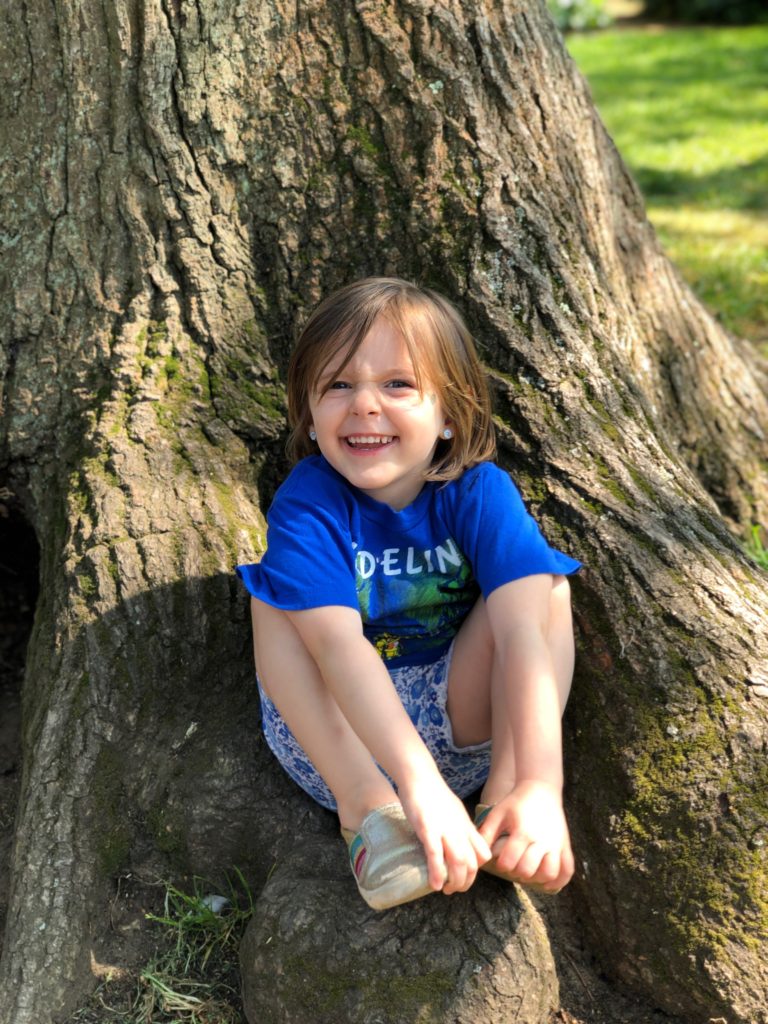
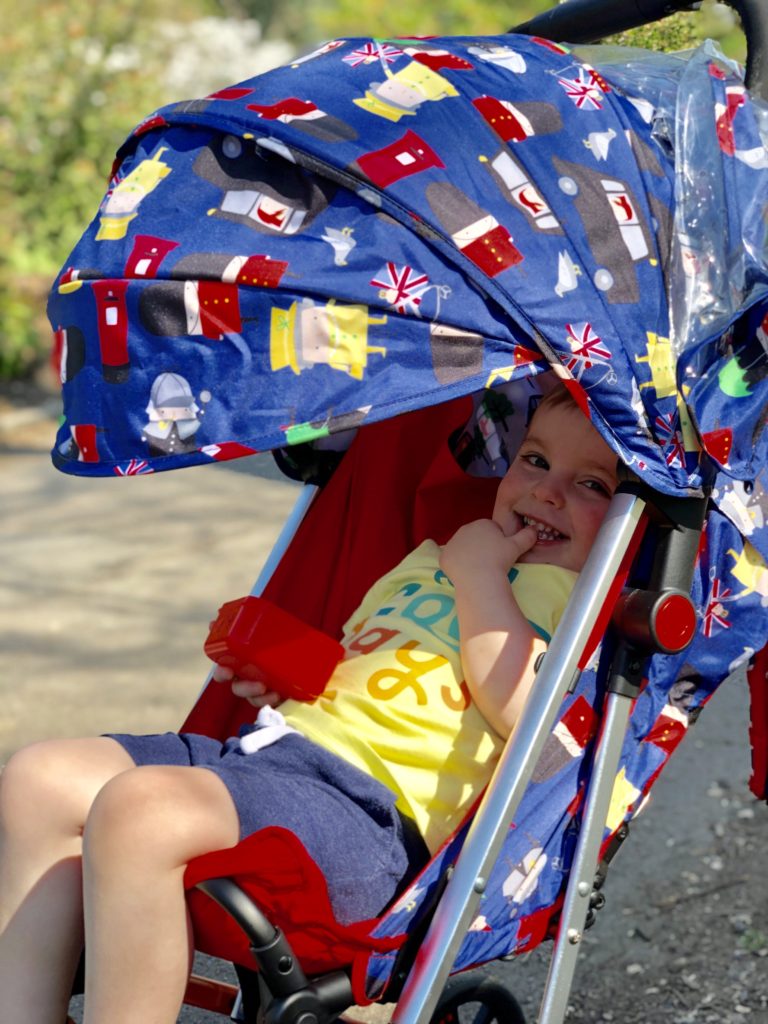
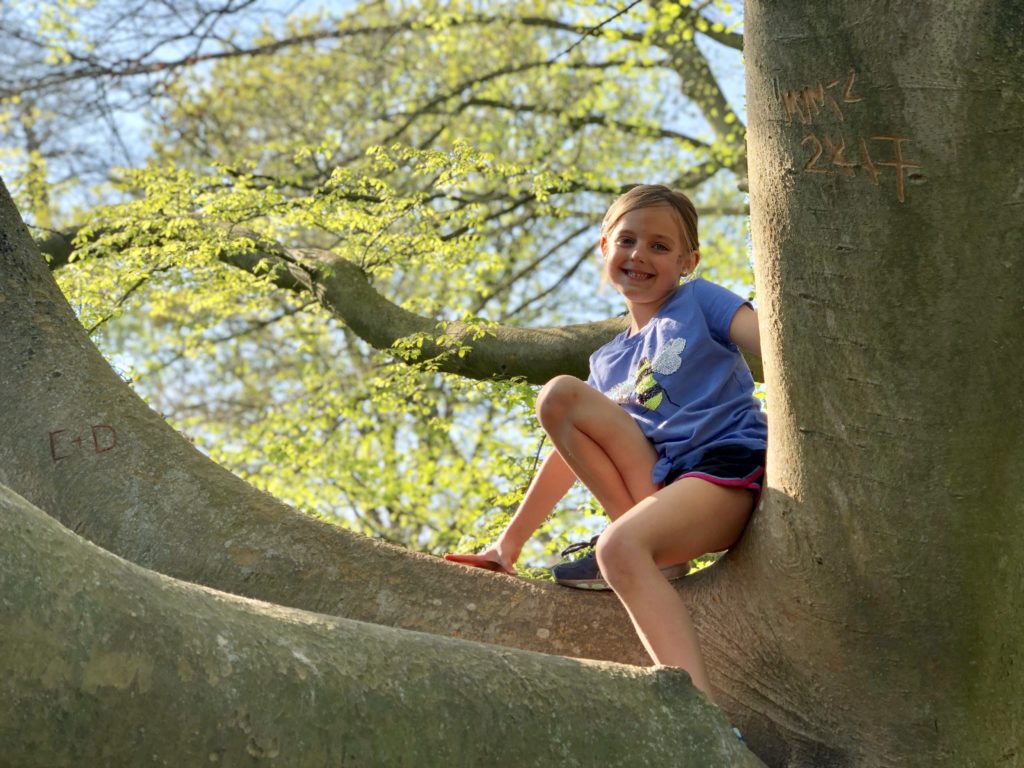

Kew Gardens is most easily accessible via a westbound District Line train to Richmond, though it can be reached on the Overground as well. We will cover the Tube in specific detail in another post. Suffice it to say here that we’ve found the District and Circle trains to be our two favorite lines, ensuring your trip to Kew will be both pleasant and scenic.
Setting aside the fact that they are the only two lines servicing our home station, Sloane Square, both D&C feature one of the newest train designs, complete with AC and the ability to walk the entire length of the carriage uninterrupted. They also sit closer to ground-level than any other Tube lines. Having significant experience taking old, deep-line trains into London City, with no AC and isolated-car carriages, these benefits on the District and Circle can’t be overstated. The temperature and airflow in the deep-line trains can be nothing short of stifling, while I have always found D&C trains to be comfortably temperate with regularly flowing air. Additionally, it’s always nice to be on a train at or just below ground level rather than 50-70 meters below the surface. Your legs will certainly thank you.
When you arrive at the station, you are treated to an exceedingly quaint little square with a village-like feel. Both the east- and westbound sides of the station maintain this vibe and I can see why Kew is such a desirable part of Richmond. The area immediately off the platform features a bookstore, multiple restaurants and cafes, specialty shops, and popup stalls serving fresh bread and pastries. The Kew Village Market also takes place right here on Sundays. I’ve heard it’s a thriving farmers market and both Olivia and I are anxious to check it out.
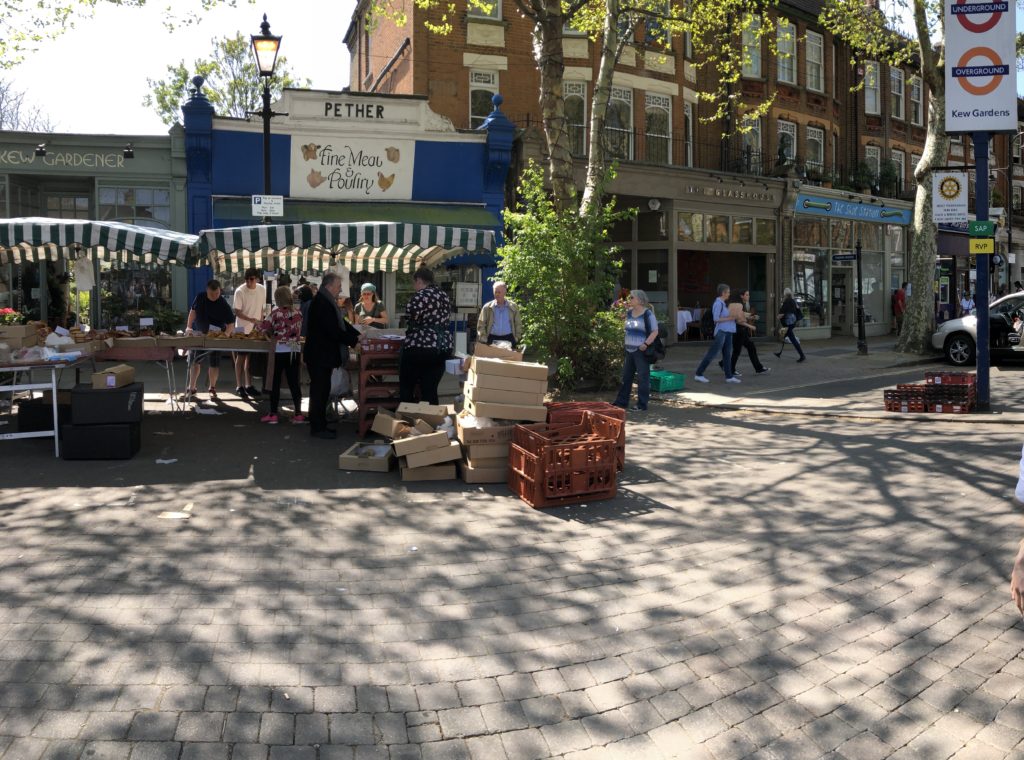
From the station, it’s a comfortable 5-minute walk down a quiet lane to the gardens. I can’t imagine living on Lichfield road. The number of tourists coming by your house daily could drive you insane. For passersby, though, it’s quite pleasant. When you arrive, you come upon the Victoria Gate. There are actually four entrances to the gardens, but I believe Victoria to be the most popular given its proximity to the Underground, and we’ve always entered here. On a weekday, you are likely to walk right in and purchase your ticket unhindered. On a weekend, however, arrive early (the gardens open at 10:00am). The first time we came to Kew was on a Saturday and we stood in line for nearly 45 minutes, which brings me to my next Kew Gardens essential, membership.
To begin with, an annual membership is a great value. A normal day at Kew costs £16.50 per adult online in advance, £18.00 at the gate, plus a suggested £1.70 donation. Kids four and older cost £4.50 in advance or £6.00 at the gate. Conversely, a day pass for a family of four costs £40/£44. At £110, the 2-adult family annual membership is a screaming deal. Add in that each adult can bring one adult guest and up to four total children aged four or over for free each visit makes this is a must buy. A membership at Kew gives you a great group activity to leverage with friends all year for free.
Membership comes with a number of other benefits. The first is avoiding the lines. Kew has two large lines that build up each spring/summer weekend; gate ticket buyers, and pre-booked online tickets. Both lines are long, though buying at the gate is longer, and moves more slowly. As a member, you skip both lines and walk in immediately. Your stamina will thank me, and the ire of your fellow garden visitors waiting in line makes it all the more satisfying. Further, members get access to the gardens two hours early, starting at 8:00 am, from May through September. It was 85 degrees during our most recent visit, with 70% humidity. An extra two hours in the morning is a big deal.

Early access is more important now than ever. Kew just opened a massive, 2.5-acre children’s garden two weeks ago, and from the description it sounds fantastic. It’s also popular. At 11:00am on Saturday we attempted to get in, and they were handing out wristbands for a 2:30pm entry. Being able to get to the children’s garden when it opens right at 10 as opposed to standing in line to get in the main entrance means the difference between getting in immediately versus waiting several hours. With young children, that means you likely won’t do it at all as they just won’t last that long out in the sun while you wait. It did for us.
Membership offers several other ancillary benefits including early booking for Christmas at Kew, a typical botanical gardens Christmas light show on steroids, and Kew the Music, evening summer concerts at the gardens.
As such, if you live anywhere near a District or Overground line service and you don’t own a Kew Gardens annual membership, you’re insane (frankly, I’m probably going to have to add an affiliate link for a Kew membership to this post at some point if one exists, given my shameless plug, but I’m that bought in). This goes double if you have children.
Yes, it’s London and there’s loads of other things to do. I know. Honestly though, there’s just so much to see here and it’s all so well done. Take a look at the map below. We’ve seen about 10% of the gardens through three visits, and have only taken in about half that in any detail. A big part of the advantage of Kew relative to other Central London parks is that it forces you to get out of the heart of the city if that’s where you spend most of your time. In addition, the gardens themselves are stunning and full of unique experiences you won’t see at other London parks. So, let’s dive in to our time at Kew thus far and talk about what makes it so special.
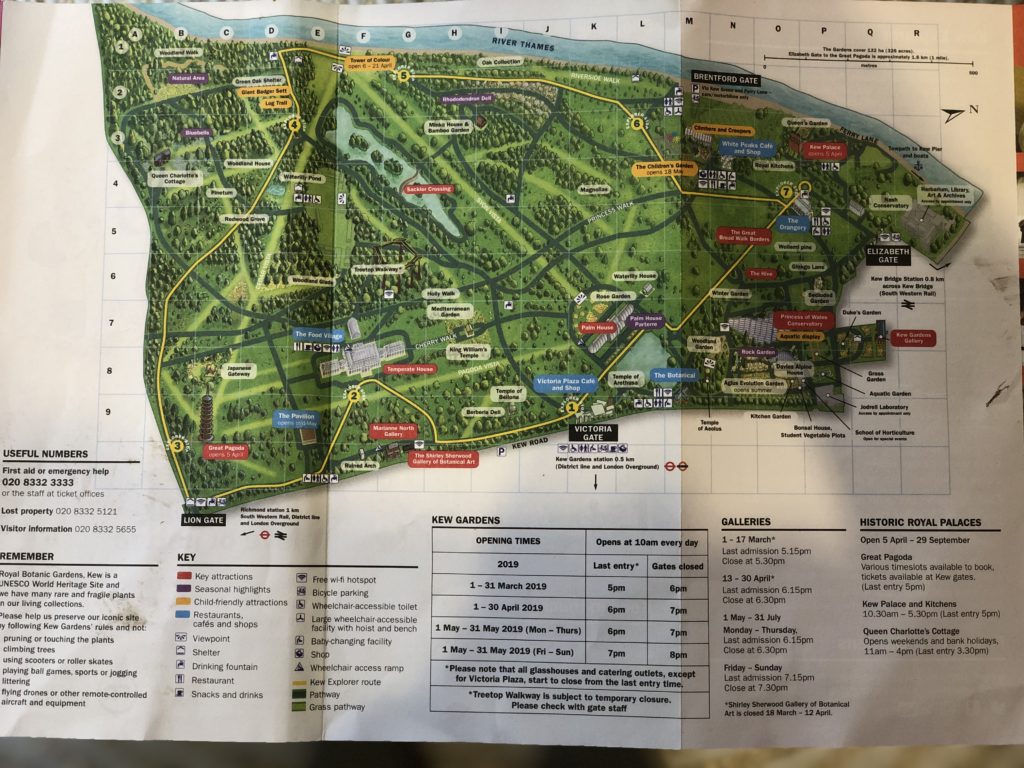
Immediately upon entry at Victoria Gate, turning left or right will take you to three of Kew’s most iconic structures: The Temperate House to your left, and the Palm House and Kew Palace to your right. We haven’t even gone in the Palm House or Kew Palace yet, though as the name suggests the Palm House is a greenhouse that displays a collection of palms and other tropical plants, while the Temperate House appears to showcase similar flora. Though we’ve been through the Temperate House, we haven’t yet had time to digest the plant displays in detail, partly because of the kids, partly because of the heat when you’re in there. It’s really hot.
Currently on offer at Kew are public displays of more than 30 glassworks by Dale Chihuly, entitled Reflections on Nature. They feature throughout our pictures from Kew and are stunning additions to the natural landscape. Given that I went to college in Chihuly’s hometown and had experience with his work, I found this particularly exciting.

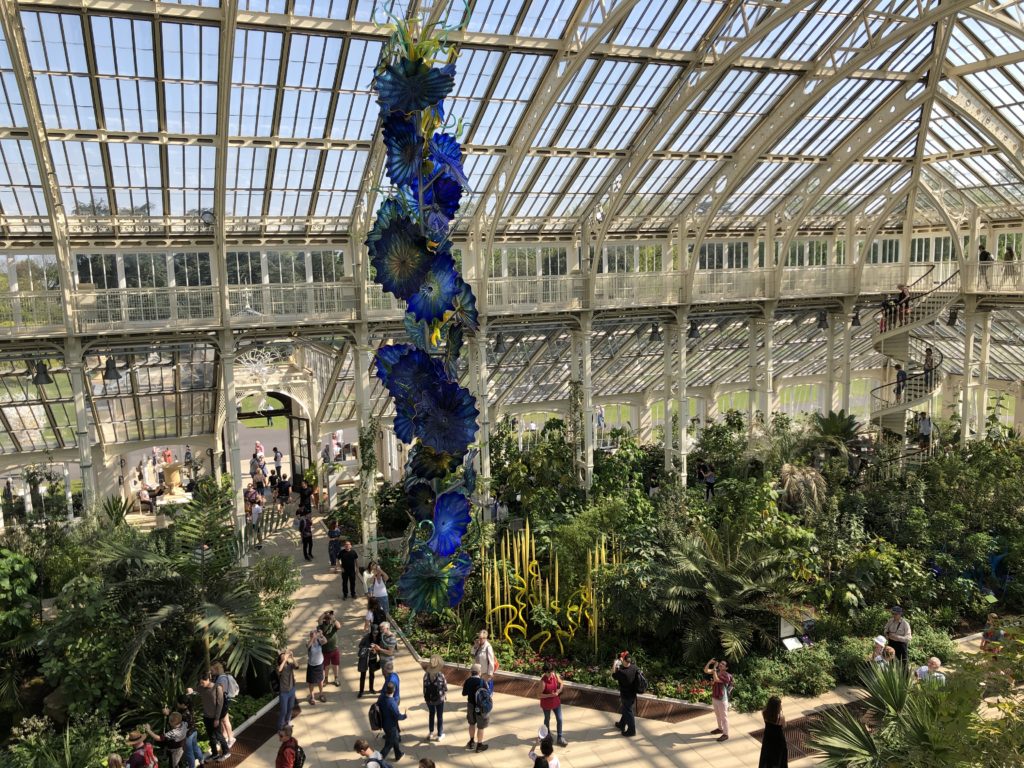
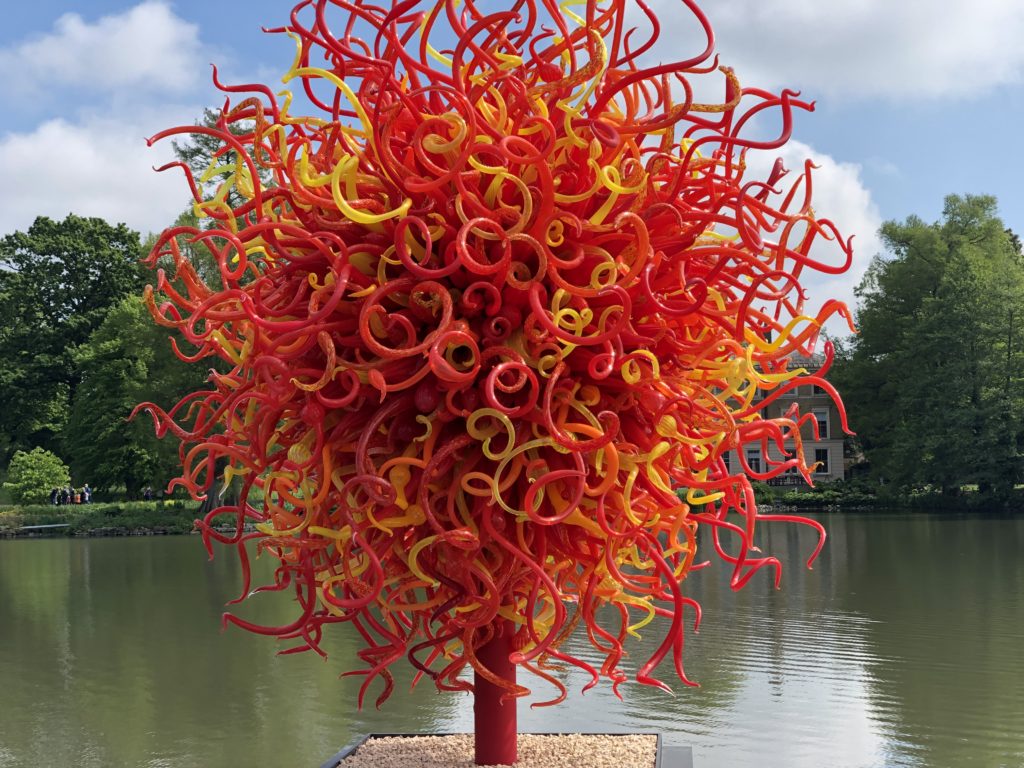
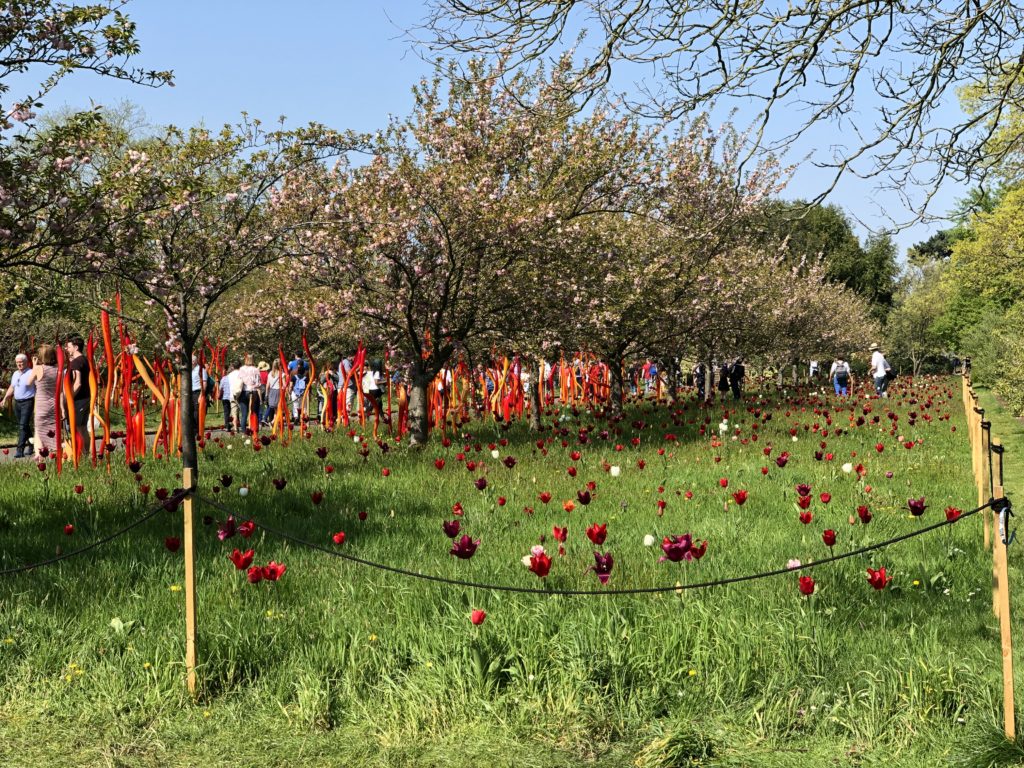
Another highlight for us was the Treetop Walkway. As the name implies you stroll amongst the trees over 55 feet in the air, with amazing views of the gardens and other buildings. While the kids loved it, be warned. This is not an attraction for those with a fear of heights, and I would recommend eating after you’ve done it. The walkways sway noticeably in the breeze, offering a sense of mild instability or vertigo to even hearty visitors.



The Food Village near the Temperate House is a great lunch stop if you haven’t brought your own picnic. They offer a variety of food choices, notably a great Barbeque spread, at reasonable prices.
Enjoy the view over the pond towards Kew Palace as you walk by the Palm House. Kids will love the fish visible below the surface. Watch closely, however, as there are no guardrails, and the stone abutting the pond is several inches above the level of the walking path, making it a perfect trippping hazard.


The Rose Garden was finally in full bloom on our latest visit, and was absolutely stunning. Petals of all colors shone vibrantly, giving off a wonderfully fragrant aroma. My grandmother grew roses in her front garden her whole life, and the smell emanating from the Rose Garden was a moving trip back to the summers of my childhood.



Straight ahead takes you through the scenic Syon Vista walk. Along this route towards the lake has been our destination for our last two visits. A striking red and yellow Chihuly glass tower frames the walk. The grass and trees around the water are noticeably less crowded than nearer Victoria Gate, and you can at times go several minutes without seeing another soul. Walk along the uniquely designed Sackler Crossing bridge and find a quiet spot for an afternoon picnic, Frisbee, football, pretend play, and cards. The combination made for a memorable afternoon with our children.





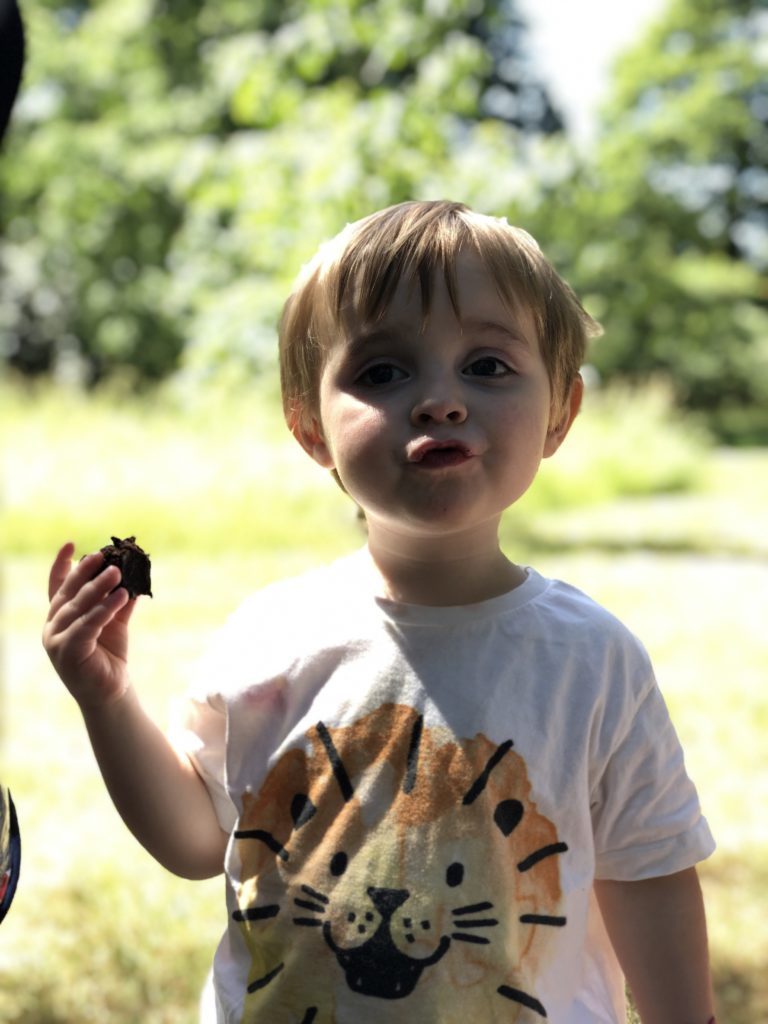
The Food Village to the left, the Palm House to the right, and the lake in the center have formed the boundaries of our explorations thus far. We can’t wait to get back to Kew and uncover even more of what it has to offer. The Great Pagoda beckons in the distance, as does the Orangery, Children’s Garden, and an afternoon jaunt along the bordering Thames.
We hope you enjoyed this deep dive into Kew Gardens. It won’t be our last visit and we will keep readers updated as we continue to explore its sights.
P.S. There’s one other membership benefit we need to talk about. The gift shop. . . I know, gift shops are usually terrible. This may be my own American bias and belief coming through that gift shops are soul-crushing floggers of cheap tat. We’ve had surprisingly good luck with British gift shops thus far, the Science Museum a particular highlight for me. Though sights that force you to exit through the gift shop exist here as well and still earn my indignation.
The Victoria Plaza gift shop is on another level. Orchids, pineapples, succulents, and everything in between, all impeccably maintained and ready to brighten up your home. The book section is well curated and attention grabbing. Cookbooks, botany, travel, London, art, Kew Gardens itself, to scratch the surface. Olivia and I are pretty picky when it comes to books and we easily spent 30 minutes browsing the last time we were here.
Their children’s section was strong enough to entertain our kids that entire time. . . That is saying something.
One notable highlight; they have an entire section devoted to bees. Books on bees, bee stationary, assorted honey, bee clothing and accessories, bee-decorated kitchenware. Their creative use of those apiarian pollinators knows no bounds. Bees are. . . a big deal in my family, though there simply isn’t enough time to explain that in full here, so this was a game-changer when my mom came to Kew.
I actively look forward to the gift shop each time we visit. I’ve never come close to saying that anywhere else I’ve been. So, the 10% off members get in person and online is a big plus, as we’ll likely be doing much of our Christmas and birthday shopping here. There’s so much more that I haven’t even covered. You must make time for the gift shop when you come to Kew. It so appropriately wraps up the relaxing and soul-enriching experience offered by the whole gardens.
I love reading this post and enjoying the lovely pictures of Kew and your beautiful family. This is the second time I’ve read it through and your descriptions are so rich that it’s easy to see why it’s a favorite place. Keeping my fingers crossed that it might be part of our itinerary when we arrive to visit you next week. The bee section of the gift shop is calling my name. We are so excited to see you and the kids! It will be fun to learn about your life in London, but mostly we’re looking forward to sharing some long overdue hugs, seeing your sweet smiles and the savoring chance to talk and laugh together. Counting the days! 💕🐝
I love love love your blog and can’t wait to read more!!!